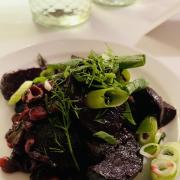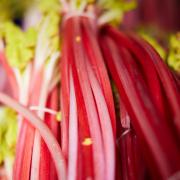Leeds is encouraging its citizens to get their hands dirty. Jo Haywood finds out why Photographs by Joan Russell
What comes to mind when you think of Leeds? Odds-on, you’re picturing teeming city streets, high-rise offices and glass-fronted malls with shops as far as the eye can see. But what about apple trees, rows of creamy white cauliflowers, runner beans reaching up a growing frame towards the sun and polytunnels packed with ripening strawberries?
This might not be what you expect from the urban sprawl of the West Yorkshire capital, but it’s a growing theme since the launch of Feed Leeds (feedleeds.org) almost a year ago.
The initiative aims to make Leeds the urban food growing capital of the north, improving community cohesion, individual health and the wider environment along the way.
When it was launched in September 2012, Leeds City Council’s executive member for the environment Mark Dobson decreed it ‘a fantastic idea’. ‘Creating a network will bring communities together and offer a wide range of benefits in health and the environment plus education and training opportunities, so it has the potential to be a huge success,’ he said.
But, almost a year on from its inception, has it actually fulfilled that potential?
The project has not been without its detractors, some claiming it’s a drain on financial and human resources in an area where participation was already increasing organically at a community level. Councillor Stewart Golton, leader of the city’s Liberal Democrat group, also raised concerns in the early stages that the city’s thousands of allotment growers were being cut out of the equation.
‘Recruiting a Food Growing Officer and procuring a website could be seen as an expensive luxury at a time when we are trying to do more with less,’ he said. ‘As an allotment holder myself, I am in support of a scheme that encourages people to become involved in growing their own food. However, there needs to be more transparency with regards to how much this scheme costs and more consultation with interested groups.’
While some still believe the initiative is unnecessary, Leeds & District Federation of Gardeners and Allotment Growers has since become a partner in the Feed Leeds project, finding a place among numerous other schemes – Leeds Urban Harvest, Roundhay Environmental Action and Leeds Edible Campus to name just three – aimed at making the city a greener, leaner place to live.
One of the most innovative to join the throng is Back to Front (backtofront.org.uk), an award-winning scheme that encourages and enables people in the red-brick terraces of Harehills and Chapeltown to transform their gardens into productive fruit and veg patches.
It was inspired by Bangladeshi families, who founder Roxanna Summers noticed were growing their own to feed their own in even the smallest of back yard spaces.
The Back to Front team she established has since gone on to help numerous families decrease the distance their food travels from miles to metres by digging up their gardens and planting whatever tickles their tastebuds (even cherries, figs and grapes).
They’ve also produced leaflets and run workshops in Richmond Hill, Harehills and Burmantofts to demystify the process of growing your own.
Community food projects are also a growing concern in North Leeds, where members of Headingley Development Trust (HDT) have taken substantial steps to make their neighbourhood a more sustainable place to live.
They have bought the local wholefood shop to ensure its future, planted crops and trees at Shire Oak School (with lots of little hands making light work of it) and introduced a regular farmers’ market.
Their latest project is a community orchard (headingleycommunityorchard.org.uk), created on a roadside rectangle of land in front of St Chad’s Church. The plot is owned by Wade’s, a trust that provides help for people in inner city Leeds, and is being maintained by HDT under a stewardship agreement. So far, the hard-working volunteers have installed seating and information boards as well as 36 apple, pear, plum, cherry, mulberry and fig trees.
‘We have regular work parties,’ said Janie Percy-Smith, secretary of Headingley Community Orchard and chairman of the governors at Shire Oak. ‘But it’s all very informal. We simply flag it up on our website and see who turns up.’
So what happens when the trees start to fruit in a couple of years’ time – will it be a free for all?
‘The fruit from the school trees will go to the children,’ she said. ‘And a lot of young people walk past St Chad’s on their way to high school every day – maybe they’ll be tempted to pick themselves a piece of fruit instead of grabbing a bag of crisps from the garage.
‘Assuming we have some fruit left once they’ve finished, we’ll probably give the rest to the church, which does a lot of work with Positive Action for Refugees and Asylum Seekers. And if we have a really bumper crop, we’ll sell it at a reduced price at the local farmers’ market.’
Headingley Community Orchard and the accompanying development trust come under the Feed Leeds umbrella – indeed, one of its members even won the council’s recent competition to design an edible flower bed for outside the Civic Hall – but do they feel like a small part of a greater whole?
‘Not really,’ said Janie. ‘That’s not what defines us, and we would be doing what we’re doing with or without our link to the project. But that’s not to say that encouraging local community projects like ours isn’t a good thing.
‘When people come together to grow their own food it serves a greater purpose. People feel part of something tangible; they feel connected and involved in their own community.
‘And, perhaps most important of all, it’s not about talking, it’s about doing. It doesn’t matter who you are, what you do or where you live; everyone can pick up a spade and participate.’
Tell us your thoughts on the Feed Leeds project – and about your own urban food growing initiative – by emailing feedback@yorkshirelife.co.uk, tweeting @Yorkshire_Life or writing to Yorkshire Life, PO Box 163 Ripon, North Yorkshire, HG4 9AG.



























